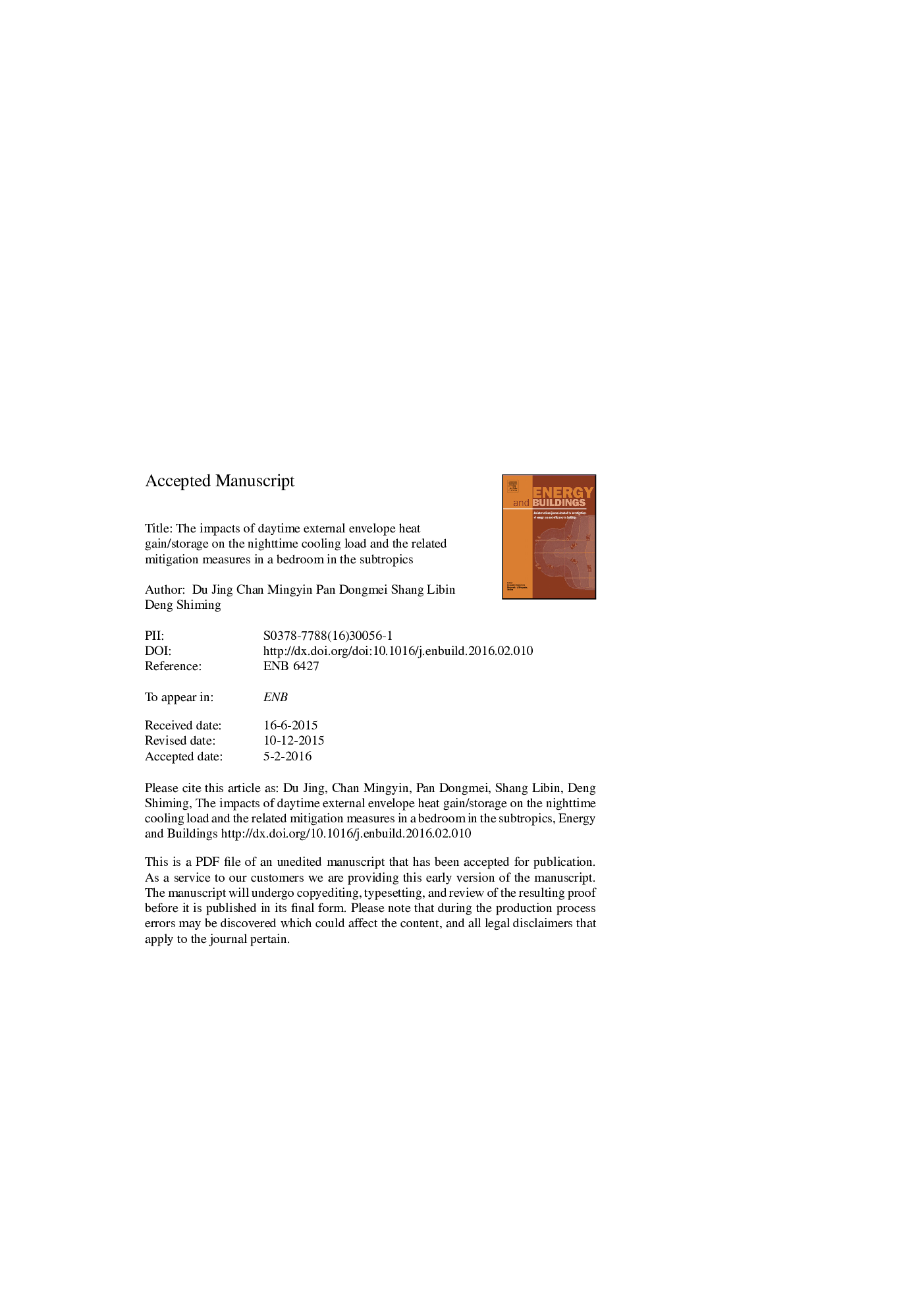| کد مقاله | کد نشریه | سال انتشار | مقاله انگلیسی | نسخه تمام متن |
|---|---|---|---|---|
| 6730243 | 504020 | 2016 | 47 صفحه PDF | دانلود رایگان |
عنوان انگلیسی مقاله ISI
The impacts of daytime external envelope heat gain/storage on the nighttime cooling load and the related mitigation measures in a bedroom in the subtropics
ترجمه فارسی عنوان
تاثیرات گرما / ذخیره سازی گرما خارجی روزانه در بار خنک کننده شبانه و اقدامات مربوط به کاهش آن در یک اتاق خواب در زیرماهی ها
دانلود مقاله + سفارش ترجمه
دانلود مقاله ISI انگلیسی
رایگان برای ایرانیان
کلمات کلیدی
موضوعات مرتبط
مهندسی و علوم پایه
مهندسی انرژی
انرژی های تجدید پذیر، توسعه پایدار و محیط زیست
چکیده انگلیسی
In the subtropics, air conditioning (A/C) for a bedroom in residential buildings commonly serves to provide an appropriate indoor thermal environment at nighttime for sleeping. During daytime when A/C is not provided, a large amount of thermal energy can be stored in the thermal mass in its envelope components, in particularly its external walls. The energy stored would be gradually released, contributing significantly to the total space cooling load in the bedroom at nighttime. Therefore, this paper reports a simulation study on the impacts of daytime external envelope heat gain/storage on the nighttime cooling load in a hypothetic west-facing bedroom and the related mitigation measures in the subtropical Hong Kong. The study results showed that, among all envelope components, the west-facing external wall contributed most significantly to the total nighttime cooling load, because of its direct exposure to solar radiation, thus the heat gain and storage in its thermal mass. In addition, adding an air gap in the west-facing external wall can reduce remarkably the hourly total nighttime cooling load for the first hour (21:00-22:00) and the total cooling load for the 10-h A/C period. However, while varying the width of either the air gap or inside/outside concrete layers would not reduce cooling load further, ventilating mechanically the air gap can further increase the cooling load reduction and improve the flatness of load variation profile at the expense of consuming additional electrical energy. Finally, adhering aluminum foil to both sides of the air gap can further remarkably reduce nighttime cooling load, and improve the flatness of the load variation profile.
ناشر
Database: Elsevier - ScienceDirect (ساینس دایرکت)
Journal: Energy and Buildings - Volume 118, 15 April 2016, Pages 70-81
Journal: Energy and Buildings - Volume 118, 15 April 2016, Pages 70-81
نویسندگان
Jing Du, Mingyin Chan, Dongmei Pan, Libin Shang, Shiming Deng,
